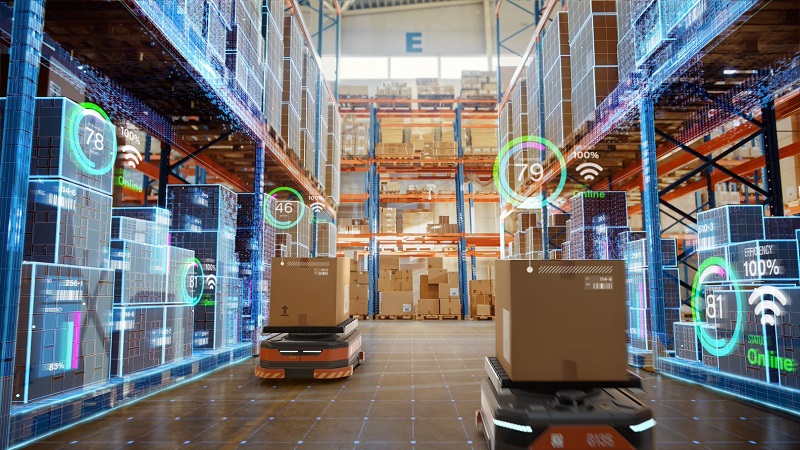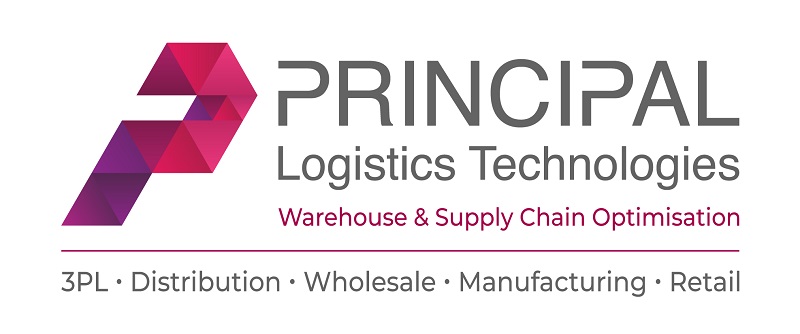
Will Generative AI Change WMS?
There is no doubt that one of the big talking points in the technology world this year is generative AI – systems such as ChatGPT and Google Bard that can create realistic text in response to simple prompts, queries and requests. In some ways, none of this is new. AI has been around for some time and there are plenty of examples of it working in real world applications. But these are mostly large and expensive applications where the organisations running them restrict access and maintain a high degree of control. What is new is that these latest systems offer a more generalised approach and are available on everyday browsers and smartphones. According to some industry estimates, 10% of all data produced globally will be from generative AI within two years. Inevitably people have begun to investigate how these tools might be integrated into existing applications. Warehouse management software (WMS) is no exception.
WMS applications have themselves been evolving. The array of internal processes they support has grown and many are also enabling more customer-facing features. However, in almost every case the functionality is “programmed” such that the application expects a certain type of query and will only issue a specific type of response. While some WMS already incorporate AI-like functions to support new insights and enhanced decision-making, generative AI offers a new approach and there are several ways it might be used in a WMS context in the short to medium term.
Training and Implementation: even as conventional applications have become more complex they have become easier to use. Most people are familiar with technologies such as smartphones and browsers and will easily learn how to use the equivalent in a business environment. In these situations, training can focus on the specifics of the application and the everyday warehouse processes it supports. This training takes time and tends to be rather rigid. Generative AI offers the prospect of new methods of interactive training to complement or replace existing techniques. Users can simply ask the WMS how to do something and it will explain in words and phrases they can understand rather than using pre-programmed responses. Multilingual support will also be possible “out of the box” thanks to the natural language translation capabilities of AI. Training will be more intuitive and interactive to promote deeper and faster learning so that users can be brought up to productive speed more quickly. System upgrades and new implementations will be deployed more quickly and with fewer operational glitches.
Intuitive Interaction: the natural language capabilities of generative AI mean that WMS users will be able to interact with applications in new ways. For example, instead of following rigid instruction-and-response tasks and processes, users could follow text or audio instructions that seem more natural to them and are therefore easier to follow. Similarly, if they do not understand an instruction or need clarification, they can ask in their own words and receive a rapid response that makes more sense. The objective, as always, is to improve task and process productivity.
Queries and Reporting: most WMS applications offer an array of reports and queries that allow operators to analyse data and performance. Many of these are preconfigured although systems do allow varying degrees of flexibility with the ability to create totally new reports. In the future, generative AI will allow operators to ask more complex and broad-ranging questions. Applications will be able draw upon WMS and external data to generate textual responses, charts and graphics that offer new insights into supply chain operations and performance. One source suggests around 90 per cent of content in companies’ quarterly reports will be created this way by 2025
Customer Interaction: customers want to buy from ecommerce businesses that they trust, have a good reputation, and can deliver on time and in full. Generative AI will support these objectives by enhancing the ways in which customers can interact with sites. This might include, for example, allowing customers to check stock availability by simply asking in their own words rather than filling in various boxes on a browser. In response, the WMS will be able to confirm availability, offer alternatives, and even make better “customers like you also bought…” suggestions that lead to increased sales. It should be possible to offer more flexible delivery arrangements based on the customer’s own requests or instructions. This will all be delivered at reduced cost, with Gartner reporting that generative AI will reduce call centre labour costs by $80bn over the next three years.
Workflows & Modelling: despite a few well-publicised gaffes, generative AI is quite good at collating information and presenting a summary in a format that is easily understood. This means that it could be used to provide some insight into supply chain performance. Operators could ask, for example, for a summary of an item or batch’s progress through the warehouse and ask what caused a bottleneck or delay. It is possible that generative AI, in conjunction with the underlying data, could help identify ways to prevent a repeat of the issues. Similarly, it should be possible to ask “what if” type questions to assess the potential impacts – good and bad – of a proposed change to a warehouse process or configuration before any real time or expense is spent. It is not hard to envisage that such systems will also be capable of making suggestions for improvements on their own. In fact, systems such as ProWMS from Principal Logistics Technologies already incorporate sophisticated facilities for “what if” and other modelling techniques. Generative AI should be able to enhance these capabilities through the insight and interaction mentioned elsewhere in this article.
Demand Planning: suppliers tend to know from experience when there will be peaks and troughs in demand for their products. Seasonal patterns are well known and tend to be the same every year (by definition). However, on top of this are peaks that can be caused by predictable events (such as major sporting events) and relatively unpredictable events (such as good weather on a particular weekend) that can lead to additional demand for specific types of product. Clearly it pays to have these items in front of customers when they want them and supply chains have evolved to meet this challenge, even with lead times and delivery timescales getting shorter and shorter. Generative AI offers the prospect of identifying new and otherwise unforeseen patterns from internal and external data that can be used to maximise stock availability at the time and point of maximum demand and also to exploit new and hitherto unknown opportunities. Various sources suggest AI in all its forms will reduce errors in predictions by up to 50 per cent and inventory overstocking by a similar amount.
Better Collaboration: large organisations, especially those operating internationally or with a large workforce, often need to communicate and collaborate (internally and externally) with different cultures and in different languages. Generative AI can help at a basic level by providing translations that are clearer and more easily understood. But it can also enhance text with better data-driven insights that can be communicated more clearly and consistently across the organisation and with partners and customers. This has the potential to remove ambiguity and confusion to promote efficient and trusted decision-making that helps to accelerate and streamline interaction and collaboration.
Product Development: during the introduction of Chat GPT4, one of the founders of its developer OpenAI demonstrated how the technology can be used to create new code. That means that generative AI will soon be used to create new applications as well as new features for existing systems. Development times will be reduced and that means faster to market for application developers. But it also means it will be possible to create applications and routines that in the past would not have been justifiable because of development times and costs. Instead, it will soon be possible to create applications that are even more bespoke or modular than at present. Every operator will have a system that is completely unique to their own requirements and which can be evolved and upgraded virtually at will. Application developers will of course still need to test rigorously before any upgrade is let loose in the real world. They will also need to be sure their applications retain the data integrity and accuracy that are be bedrocks of any robust application.
Systems such as ChatGPT and Google Bard offer the prospect of exciting new ways ahead for WMS and other business applications. But this is only the beginning. Much of what we can foresee today will come to pass in the not-too-distant future but there will no doubt be many as yet unforeseen possibilities – and challenges – ahead.
About Cold Chain Federation member Principal Logistics Technologies: For over 30 years, Principal Logistics Technologies has been a leader in the design and delivery of innovative warehouse management software (WMS) and enterprise resource planning (ERP) software. Its technology and services optimise operational performance, reduce OpEx, add new revenue-generating, value-added services and increase revenue for 3PL, distribution, wholesale, manufacturing, and retail warehouse businesses. The company supports enterprise-level and multinational businesses with complex single and multisite operations spanning 3PL, chemicals & hazardous goods, hard & soft commodities, chill picking, cold storage, cross docking, eCommerce, FMCG, pharmaceuticals & healthcare and more. It operates from offices in Dublin, Ireland and Manchester, UK.

Comments are closed.
